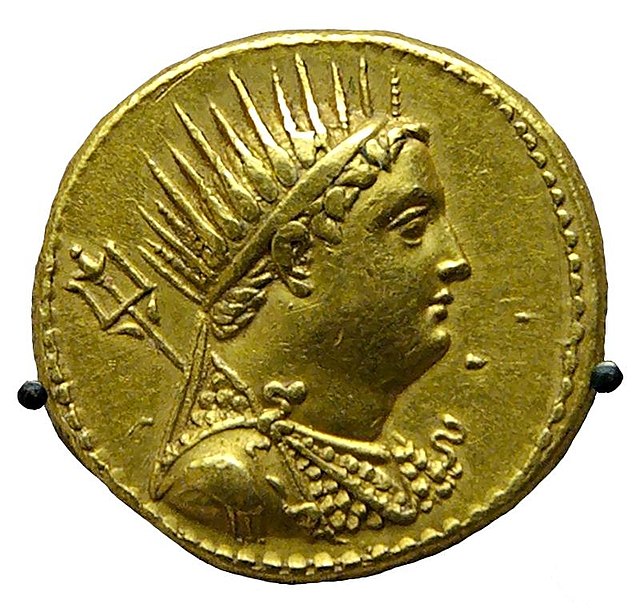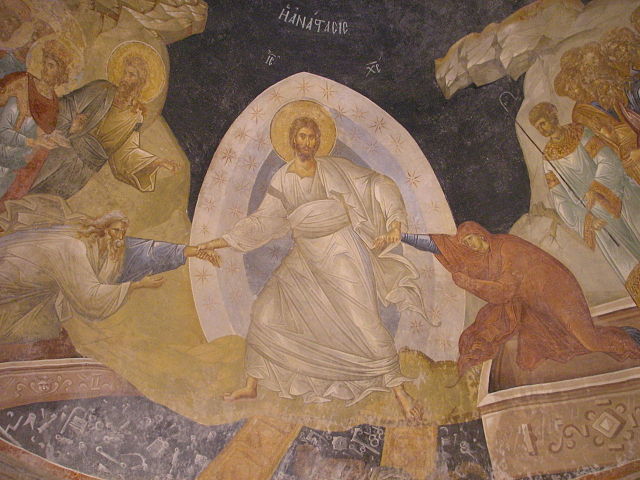Halo (religious iconography)
A halo (from Ancient Greek ἅλως 'threshing floor, disk'; also called a nimbus, aureole, glory, or gloriole is a crown of light rays, circle or disk of light that surrounds a person in works of art. The halo occurs in the iconography of many religions to indicate holy or sacred figures, and has at various periods also been used in images of rulers and heroes. In the religious art of Ancient Greece, Ancient Rome, Christianity, Hinduism, and Buddhism, sacred persons may be depicted with a halo in the form of a circular glow, or flames in Asian art, around the head or around the whole body—this last form is often called a mandorla. Halos may be shown as almost any colour or combination of colours, but are most often depicted as golden, yellow or white or as red.
Standing Buddha with a halo, 1st–2nd century AD (or earlier), Greco-Buddhist art of Gandhara
Octadrachm of Ptolemy III
Coin of Indo-Greek king Menander II (90–85 BCE), displaying Nike with a halo on the reverse
Muhammad leads Abraham, Moses, Jesus and others in prayer. Persian miniature, 15th century
An aureola or aureole is the radiance of luminous cloud which, in paintings of sacred personages, surrounds the whole figure.
17th century Central Tibetan thanka of Guhyasamaja Akshobhyavajra, Rubin Museum of Art
Images of Mary, mother of Jesus, are often surrounded by an aureole, as in this image of Our Lady of Guadalupe.
Christ and His Resurrection, fresco in Chora Church, Istanbul
Christ in Majesty shown within a mandorla shape in a medieval illuminated manuscript








